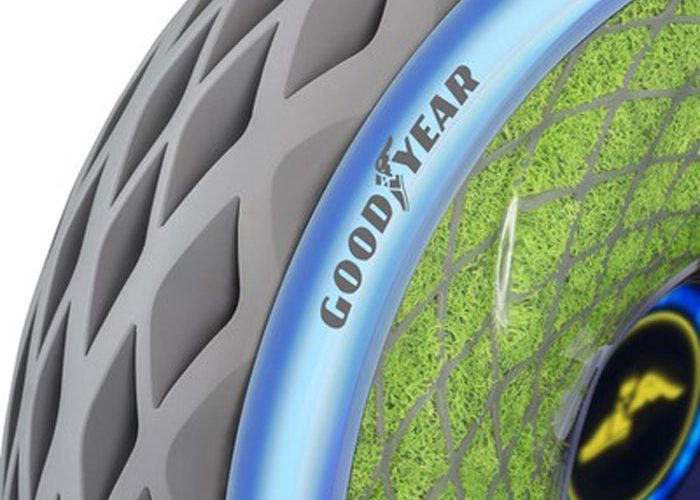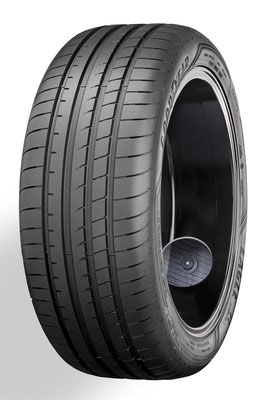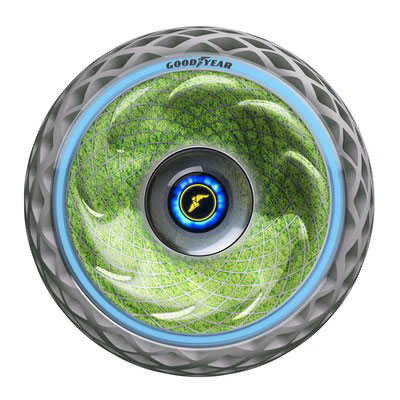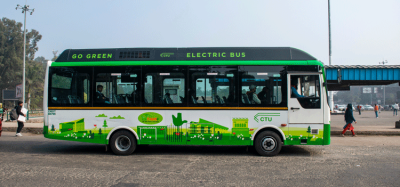Innovative new tyre technology showcased at Geneva Motor Show 2018
- Like
- Digg
- Del
- Tumblr
- VKontakte
- Buffer
- Love This
- Odnoklassniki
- Meneame
- Blogger
- Amazon
- Yahoo Mail
- Gmail
- AOL
- Newsvine
- HackerNews
- Evernote
- MySpace
- Mail.ru
- Viadeo
- Line
- Comments
- Yummly
- SMS
- Viber
- Telegram
- Subscribe
- Skype
- Facebook Messenger
- Kakao
- LiveJournal
- Yammer
- Edgar
- Fintel
- Mix
- Instapaper
- Copy Link
Posted: 13 March 2018 | Intelligent Transport | No comments yet
The 2018 Geneva International Motor Show saw Goodyear showcase their new intelligent tyre prototype and the Oxygene concept…


Goodyear has revealed two new tyre prototypes, envisioning driving solutions with real-time capabilities and producing cleaner urban mobility.
The intelligent tyre prototype is a complete information system. All components, including the tyre, sensors and cloud-based algorithms, work together to communicate in real time with fleet operators, via a mobile app.
“As shared mobility continues to grow in popularity, we are seeing applications where kilometres driven per vehicle will increase substantially in the years ahead,” said Chris Delaney, President of Goodyear Europe, Middle East and Africa. “For shared fleet operators, proactively managing tyre service issues is critical to both the customer experience and the business model.”
The Goodyear intelligent tyre prototype allows for continuous connectivity and real-time data sharing. This would enable optimal tyre usage for safer and more cost-efficient mobility, with a maximised uptime.

The sensors and algorithms included within the tyre enable the tyre’s status – including wear, temperature and pressure – to be continuously updated and shared with operators.
“Tyre performance and wear information provide a real-time signal for when a tyre needs service to extend its life, fuel economy and performance attributes,” Delaney continued. “This kind of proactive maintenance allows fleet operators to precisely identify and resolve tyre-related and potential service issues before they happen.”
Goodyear’s second concept, called Oxygene, features living moss growing within the side wall.
This unique open structure, combined with the tyre’s smart tread design, absorbs and circulates moisture and water from the road surface, enabling photosynthesis and consequently the release of oxygen into the air.
“With more than two-thirds of the world population expected to live in cities by 2050, the demands on transport networks in urban environments will increase substantially,” said Delaney. “Smarter, greener infrastructure and transport will be crucial in addressing the most pressing challenges of urban mobility and development.”
Oxygene is designed to integrate seamlessly into future cityscapes, with several performance solutions. The tyre inhales CO2 from the air to feed the moss in its sidewall which consequently releases oxygen. In a city similar size to Paris, with 2.5 million vehicles using Oxygene tyres, 3,000 tonnes of oxygen would be generated and 4,000 tonnes of CO2 absorbed.
The tyre features a non-pneumatic construction that is 3D-printed with rubber powder from recycled tyres. This produces worry-free mobility as the lightweight, shock-absorbing structure provides a long-lasting puncture-free solution extending the life of the tyre. The open structure also supplies additional safety measures as water is absorbed from the tread; improving grip.
The energy generated through photosynthesis is harvested by the tyre to power the on-board sensors, artificial intelligence processing unit and a light strip in the sidewall that switches colours. This can warn road users and pedestrians of upcoming manoeuvres or braking.
Oxygene also incorporates Li-Fi, a visible light communications system, which enables the tyre to connect to the Internet of Things (IoT), allowing vehicle-to-vehicle and vehicle-to-infrastructure data exchange. This is critical to smart mobility management systems.


According to the World Health Organization (WHO), more than 80 per cent of people who live in air pollution-measured urban areas are exposed to air quality levels that exceed WHO limits[1]. Oxygene offers a therefore necessary, sustainable solution for city pollution.
Both prototypes illustrate Goodyear’s commitment to continuously improve technology with the aim to reduce pollution, reduce costs and provide more reliable urban mobility.
“As the face of mobility continues to evolve, so will the needs of consumers and fleet operators,” said Delaney. “Goodyear is anticipating the products, services and experiences that will deliver the mobility that consumers and fleet operators need.”
Related topics
Air Quality, Fleet Management & Maintenance, Infrastructure & Urban Planning, Sustainable Urban Transport
Related organisations
The Goodyear Tire & Rubber Company
Related people
Chris Delaney








